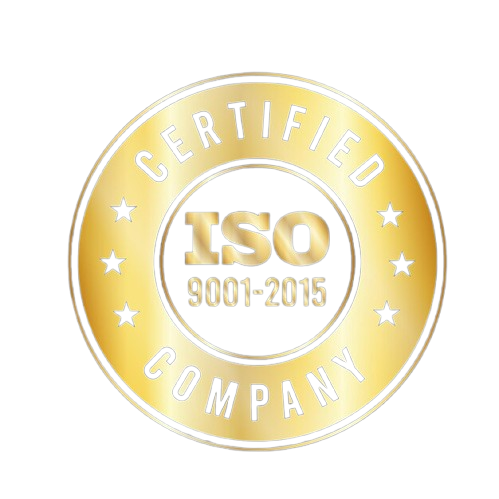Exterior wall cladding panels are essential for modern construction projects, providing a stylish, durable, and protective outer layer that shields buildings from environmental elements. These panels are widely used across residential, commercial, and industrial buildings, not only for their visual appeal but also for their ability to enhance structural integrity and insulation. Whether you’re looking to update a building’s exterior or improve energy efficiency, exterior wall cladding panels offer a versatile solution that elevates both aesthetics and performance.
This article will explore the benefits of exterior wall cladding panels, the various materials and designs available, installation considerations, and the best practices for selecting the right panels for your project.
What are Exterior Wall Cladding Panels?
Exterior wall cladding panels are building materials that are installed on the outer walls of a structure to protect it from external elements such as rain, wind, sun, and pollution. Cladding acts as a barrier that safeguards the building’s internal materials and insulation, while also enhancing its appearance. These panels come in a variety of materials, including metal, stone, wood, and composite materials, each offering unique aesthetic and functional qualities.
By adding a layer of cladding, buildings benefit from improved insulation, reduced energy costs, and increased structural resilience, making cladding a popular choice for sustainable, modern construction.
Benefits of Exterior Wall Cladding Panels
Exterior wall cladding panels offer several advantages for building construction and renovation projects. Here are some of the key benefits:
1. Enhanced Durability and Protection
One of the primary functions of exterior cladding is to protect the building from environmental stressors. High-quality cladding panels are designed to withstand harsh weather conditions, UV exposure, and potential impacts, prolonging the building’s lifespan. Cladding panels are also resistant to rot, corrosion, and mold, which helps maintain the structure’s integrity and appearance over time.
2. Improved Energy Efficiency and Insulation
Exterior cladding panels add an additional layer of insulation to the building, helping maintain internal temperatures by reducing heat transfer. This enhanced insulation improves energy efficiency, reducing heating and cooling costs and supporting sustainable building practices. Cladding with effective thermal insulation properties is especially useful in areas with extreme weather conditions, as it keeps interiors comfortable and reduces reliance on HVAC systems.
3. Low Maintenance Requirements
Unlike traditional building materials, exterior wall cladding panels require minimal maintenance to keep them looking their best. High-quality materials like metal and composite cladding are resistant to fading, cracking, and warping, which means they require less frequent repairs or replacements. Cleaning cladding panels is also simple and typically only requires periodic washing to maintain their appearance.
4. Aesthetic Versatility and Modern Appeal
Exterior wall cladding panels come in a variety of colors, textures, and finishes, providing endless design possibilities. Whether the goal is to achieve a sleek, modern look or a rustic, natural appearance, cladding panels can be customized to meet diverse design preferences. This versatility makes cladding panels an ideal choice for both new constructions and renovations, allowing buildings to achieve a distinctive and attractive facade.
5. Enhanced Structural Support and Stability
In addition to aesthetics and insulation, certain types of cladding panels can reinforce the building’s structural integrity. For instance, metal and composite panels provide added strength and stability, especially when installed with high-quality framing systems. This reinforcement helps protect buildings from damage caused by wind and impacts, making cladding panels an excellent investment in durability.
Types of Exterior Wall Cladding Panels
Exterior wall cladding panels come in a variety of materials, each with its unique properties and design benefits. Here are some popular options:
1. Metal Cladding Panels
Metal cladding, made from materials like aluminum, steel, and zinc, is a popular choice for contemporary buildings. These panels are known for their durability, weather resistance, and sleek appearance. Metal cladding can be treated with finishes that enhance corrosion resistance, ensuring longevity even in harsh climates.
- Advantages: High durability, corrosion resistance, modern aesthetic.
- Common Uses: Commercial buildings, industrial facilities, and modern residential homes.
2. Stone Cladding Panels
Stone cladding offers a natural, timeless appeal and adds a layer of sophistication to building exteriors. Made from materials like granite, marble, or limestone, stone cladding panels are incredibly durable and resistant to weathering. However, they can be heavier than other cladding types, often requiring reinforced support.
- Advantages: Natural look, extreme durability, adds value to the property.
- Common Uses: Luxury residences, heritage buildings, and architectural landmarks.
3. Wood Cladding Panels
Wood cladding panels bring warmth and character to a building, making them ideal for rustic and natural design themes. They are usually treated to withstand moisture and pests, but they do require periodic maintenance to prevent issues like warping or discoloration.
- Advantages: Natural appearance, eco-friendly options, warmth and texture.
- Common Uses: Residential homes, cabins, and sustainable building projects.
4. Composite Cladding Panels
Composite cladding panels are made from a combination of materials, often including wood fibers, plastics, and bonding agents. These panels offer the look of natural wood without the high maintenance requirements and are available in various colors and textures.
- Advantages: Durable, low maintenance, resistant to weather and UV rays.
- Common Uses: Residential and commercial buildings, especially in urban areas.
5. Brick and Veneer Cladding
Brick cladding panels mimic the look of traditional brickwork and are available in various colors and textures. These panels are lightweight, making them easy to install, and they provide good insulation properties.
- Advantages: Classic appearance, good insulation, easy installation.
- Common Uses: Residential buildings, commercial properties, and renovations.
6. Fiber Cement Cladding Panels
Fiber cement cladding panels are made from a mixture of cement, sand, and cellulose fibers, offering strength and durability. They are fire-resistant and require minimal maintenance, making them a popular choice for both residential and commercial projects.
- Advantages: Fire-resistant, durable, low maintenance.
- Common Uses: Both residential and commercial buildings, especially in fire-prone areas.
Factors to Consider When Choosing Exterior Wall Cladding Panels
When selecting exterior wall cladding panels, it’s important to consider several factors to ensure they meet both aesthetic and functional requirements:
1. Climate and Weather Conditions
The local climate plays a significant role in choosing cladding materials. For example, metal and composite cladding are ideal for areas with high humidity or rain, while fiber cement is suitable for fire-prone regions. Choose materials that can withstand the specific environmental conditions of your location to ensure durability.
2. Insulation and Energy Efficiency
If energy efficiency is a priority, consider cladding materials with high insulation properties. Composite, fiber cement, and stone cladding generally offer better insulation, helping reduce energy costs and maintain a comfortable interior temperature.
3. Maintenance Requirements
Different cladding materials have varying maintenance requirements. Metal and composite cladding are low-maintenance options, while wood and stone may require regular sealing and cleaning. Choose a material based on the level of maintenance you’re prepared to commit to.
4. Aesthetic Appeal and Design Preferences
Consider the design goals of the project when selecting cladding. If you’re aiming for a modern aesthetic, metal and composite cladding are great options. For a natural look, wood or stone cladding can be ideal. Many cladding options are customizable in color, texture, and finish, allowing for a tailored appearance.
5. Cost and Budget
The cost of exterior wall cladding varies significantly based on material type, installation requirements, and maintenance needs. It’s important to evaluate the long-term costs, as more durable options like metal and composite cladding can be more cost-effective over time despite a higher upfront investment.
Best Practices for Installing Exterior Wall Cladding Panels
Proper installation is crucial to maximize the benefits of exterior wall cladding panels. Here are some best practices to follow during installation:
1. Ensure Proper Insulation and Sealing
To prevent moisture infiltration, it’s important to properly seal and insulate cladding panels during installation. Effective sealing and insulation help maintain energy efficiency and protect the building from mold and structural damage.
2. Use the Right Fasteners and Support Systems
Each cladding material requires specific fasteners and support systems. Using the right hardware ensures that panels remain secure and stable, especially in areas with high winds or temperature fluctuations. Consult manufacturer recommendations to determine the correct support system for your chosen cladding material.
3. Allow for Expansion and Contraction
Certain materials, like metal and composite, expand and contract with temperature changes. Allowing for this movement during installation prevents warping, cracking, or buckling of the panels over time.
4. Follow Manufacturer’s Installation Guidelines
Each cladding type has unique installation requirements, and following the manufacturer’s instructions ensures that the panels perform optimally and maintain their warranty coverage. Professional installation is highly recommended for complex materials such as stone or metal.
The Advantages of Exterior Wall Cladding Panels
Using exterior wall cladding panels offers numerous advantages, from enhancing the building’s aesthetics to providing protection and insulation. Key benefits include:
- Improved Structural Integrity: Cladding protects the building’s structural materials from environmental damage, enhancing its durability and stability.
- Increased Property Value: Quality cladding improves the appearance of a building, making it more attractive and valuable on the market.
- Sustainability: Many cladding options, such as composite and fiber cement panels, are made from sustainable materials, supporting eco-friendly construction practices.
- Enhanced Weather Protection: Cladding shields buildings from rain, wind, and sunlight, reducing the risk of moisture damage, mold growth, and fading.
Why Choose Wise Link for Exterior Wall Cladding Panels
At Wise Link, we offer a wide selection of high-quality exterior wall cladding panels that cater to diverse design and functional needs. Our cladding panels are designed to provide durable, low-maintenance, and aesthetically pleasing solutions for modern buildings. Here’s why Wise Link is the right choice for your cladding needs:
- Comprehensive Product Range: From metal and composite to fiber cement and stone, our selection includes options suitable for all climates and architectural styles.
- Customization Options: We offer a variety of colors, finishes, and textures to help you achieve the desired look and functionality.
- Expert Installation Support: Our experienced team ensures that your cladding panels are installed correctly for optimal performance and longevity.
- Sustainable Solutions: We prioritize eco-friendly options, allowing you to select cladding that aligns with sustainable building practices.
Conclusion: The Impact of Exterior Wall Cladding Panels on Modern Construction
Exterior wall cladding panels are a valuable addition to modern buildings, offering enhanced durability, energy efficiency, and design flexibility. By choosing the right cladding material and following best practices for installation, buildings can achieve a striking aesthetic while gaining protection from the elements.
If you’re ready to upgrade your building with top-quality cladding panels, Wise Link provides custom solutions to meet your architectural and environmental needs. Contact us today for a free consultation and quote to explore how our cladding panels can enhance your next project.
Transform Your Building with High-Quality Exterior Wall Cladding Panels
Enhance Durability, Energy Efficiency, and Aesthetic Appeal. Contact Wise Link Today for a Free Consultation and Custom Quote!





